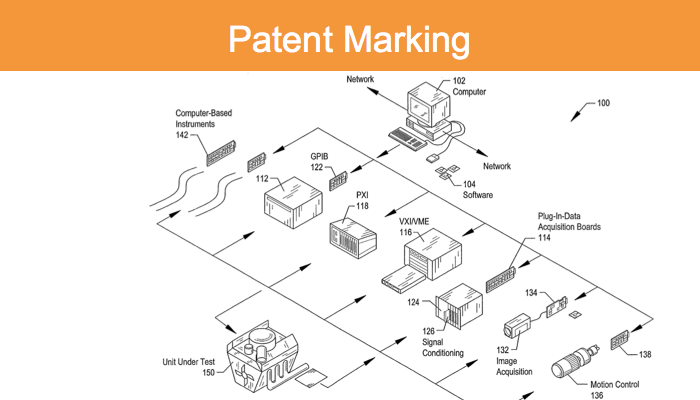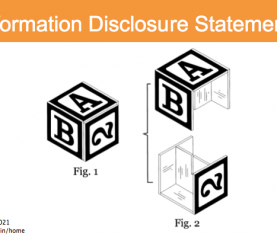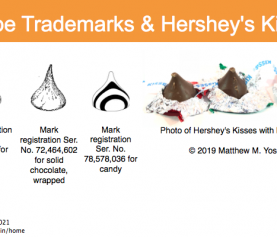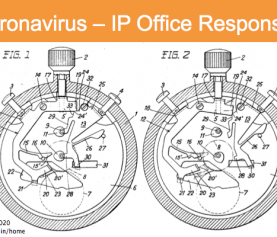9 Things to Know about Patent Marking
“Patent Marking” means putting a notice on your product that your product is patented. By marking your product with “Patent” (or “Pat.”) and your patent number – such as “Pat. 12,345,678” – you can comply with the law that requires patent marking in order to collect money for infringement. This is “physical marking.” The 2011 America Invents Act (AIA) added “virtual marking,” which makes it easier for patent owners to comply with the marking requirements. Read on to see nine things you should know about patent marking.
1. Why does patent marking exist?
Patent marking exists so that you, a patent owner, can notify the public and any competitors that your products are patented. Without notice from you to infringers, you can’t collect money damages from an infringer for products that infringe your patent. Patent marking puts everyone on “constructive notice” (which is attorney-speak for “you know or should have known”), which is much simpler than putting everyone on “actual notice,” which would require you informing each alleged or potential infringer. That’s not practical – patent marking is much more efficient.
2. Do I have to mark my products with patent marking?
No. But you almost certainly should, because under 35 U.S.C. § 287 (the link is to a PDF at the USPTO site), you can collect damages for infringement only if you notify the alleged infringer. You could write to each alleged or potential infringer to provide notice, or you can properly mark your products.
3. How do I properly mark my products?
For physical marking, you can mark your product with “Patent” (or “Pat.”) and your patent number – such as “Pat. 12,345,678” – or if a patent is pending, you can mark with “Pat. Pending.” For virtual marking, you can mark your products with “Patent” (or “Pat.”) and an internet address that is free to access – you can’t charge anyone to access the website.
4. Why does virtual patent marking exist?
For many patent owners, virtual marking is simpler and less expensive than physical marking. If your product is covered by more than one patent, and you choose physical marking, you must list each patent in order to be able to collect money damages against an infringer. And if you have more patents issued, you would have to revise your physical marking on a product to properly list the new patent or patents. This is a costly and inefficient way to provide proper patent marking. Virtual marking allows patent owners to provide notice such as “Pat. www.yospinlaw.com” and then list each product and all the patents associated with it on that web site. This is far faster and more efficient, especially for a patent owner with multiple products. Now, the patent owner only needs to use one patent marking phrase on every product, and keep a web page updated.
5. Where do I put patent marking on my products?
You must mark the product itself in a place that can be seen. If it is not possible to mark the product, either because the product is too small or because the cost of the product makes marking it prohibitively expensive, you may mark the product’s packaging. But be careful not to mark the packaging solely because it is more convenient. A court may decide not to allow money damages, due to improper marking, if the product could have been marked, and the patent owner chose to mark the packaging instead. Note that, with virtual marking, the cost to properly mark a product, and keep the marking updated, is likely lower than it was in the past, which will weigh against a patent owner’s decision to mark packaging rather than the product.
6. Who must properly mark the product?
Any patent owner who makes and sells a product must properly mark it, or the owner won’t be able to collect damages. A patent owner who licenses a patent must take reasonable steps to ensure that each licensee is properly marking the products. The licensor must monitor the activities of its licensees, and demand that any products which are not properly marked be marked.
7. What types of inventions does patent marking apply to?
Patent marking applies to utility patents, design patents, and plant patents. With utility patents for services that are covered only by method claims, there may be nothing to mark. But if the patent holder, or licensees, offer services covered by a patent, it is probably worth marking with phrasing such as “For use under U.S. Pat. 12,345,678.”
For software, any physical product on which the software is sold (such as a CD or a floppy disk, if you recall those) can and should be marked. If the software is accessible for sale or download at a website, the description should include the patent marking.
8. Should I mark a component of a patented product?
If your product is not patented and is a component of a patented larger product, the larger product should be properly marked, and only one component of it needs to be. If your product is separately patented, you should properly mark it, as well as the larger product.
9. My patent is pending – how do I mark it?
If your patent is pending, you don’t need to mark your products with “Pat. Pending.” There’s no penalty for not marking “Pat. Pending,” and no advantage to doing so other than telling potential infringers that you have filed a patent application and may receive a patent. Marking with “Pat. Pending” doesn’t entitle you to damages before a patent is issued, and it doesn’t let you stop someone else from copying your product.
About the image used above
Curious about the image used with this blog post? It’s from US patent 8,145,634, granted in 2012 for a “Patent marking system.” Yes: it’s a patent for a patent marking system (it feels a little meta). There are other innovations related to patent marking that inventors have applied to patent, such as US application 2002/0035571A1, for a “Digital patent marking method,” which has been abandoned, and US application 2014/0258144A1, for a “Method of Virtual Patent Marking,” which is still pending.
Do you have questions?
If you have questions about patent marking or how to implement patent marking for your product or service, I’d be glad to hear from you in the comments. Call me at 617-340-9295 or email me at my Contact Me page. Or, find me on Facebook, Twitter, Google+, LinkedIn, Google Local, or Avvo.






